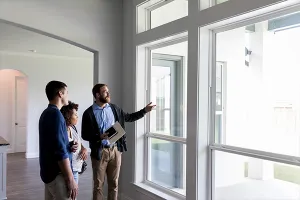Today, immigrants play an important role in economic growth across the United States where they start businesses and hire workers. Immigrant workers supply the labor market at all skill levels. They also make up a significant portion of home sales and constitute one of the fastest growing segments of the housing market.
In addition to economic opportunities, immigrants are attracted to the U.S.’s strong, legal protection of personal property rights. In other countries, home-owners’ rights may not be codified and, depending on the political climate, can wax and wane. In the U.S., homeowners can be assured that, if they buy property, their rights to it are protected.
Foreign-born buyers drive growth
Most immigrants have a strong desire to own their own home. The longer an immigrant stays in the U.S., the more likely it is that they will purchase property. In fact, the rate of foreign-born homeownership has been trending up for many years, while the homeownership rate for native-born residents has been trending downward.
Immigrants make up a significant portion of domestic home sales, especially in the first-time buyer’s market. According to Harvard University’s Joint Center for Housing Studies they account for about 10 percent of home sales in the U.S. and about 15 percent of first-time buyers. In a number of cities, they are the difference between a stable market and one in distress.
Even more important is that immigrants are driving growth in the housing market. Between 2000 and 2012, foreign-born buyers accounted for about 40 percent of market growth in the U.S. while only representing 13 percent of the population. They are the fastest growing segment of American buyers according to a study done by the Mortgage Bankers Association. Though this is particularly true in areas that have traditionally served as gateways, including California and New York, immigrants are also important in newer U.S. destinations such as Georgia and North Carolina.
Rebuilding distressed markets
Immigrants are often first-time homebuyers who look for bargain properties in which they can invest sweat equity. Neighborhoods rampant with foreclosures and bottomed-out prices have become attractive investments. In many cities hard hit by the economic downturn, foreign-born buyers are finding value and preventing further market declines.
A report on immigrants’ effects on local economies by Partnership for a New American Economy concludes “immigrants can simultaneously boost housing prices in some areas while easing housing affordability problems elsewhere,” because many gravitate to affordable neighborhoods and revitalize areas in decline. The same report quantifies the effect of immigrants on median home values by U.S. county for the period 2000 to 2010. Their interactive map, available at renewoureconomy.org/housingmap, makes it easy to view these impacts across the U.S.
Immigrants not only raise home prices through increasing demand, they also attract more native-born residents to the same areas. An Americas Society/Council of the Americas research report found that for every 1,000 immigrants moving to a county, 250 U.S.-born residents move there. Find their report at renewoureconomy.org/issues/american-cities
The Dayton initiative
Dayton, Ohio is a city that has actively recruited immigrants to rebuild its sliding economy and real estate market. The city lost a major employer when General Motors closed a huge manufacturing facility in 2008 at the beginning of the recession. Leaders recognized they needed more businesses and employers to stay afloat.
In a 2011 plan called “Welcome Dayton – Immigrant-Friendly City,” the city outlined initiatives to nurture immigrant culture and businesses, including:
- creating immigrant business districts
- conducting trade missions to other countries
- expanding translation services for city services
- encouraging immigrant participation in local government and
- initiating a city-wide conversation on the plan
In 2012, Dayton’s mayor traveled to Turkey to convince a community of refugee Ahiska Turks to relocate to the city. Over 2,000 Turks moved to a neighborhood called North Dayton. Refugees from other areas have joined them. The city has been infused with entrepreneurs starting businesses in everything from ethnic restaurants to information technology firms.
Now, Dayton is home to over 20 immigrant communities. As they’ve grown and businesses have prospered, new residents began buying and repairing homes, boosting home sales. Dayton’s rate of home sales was up 16 percent in 2013 from a year earlier, significantly above a national increase of 9.2 percent. Read more about Dayton’s program at welcomedayton.org.
Austin’s experience
Following Dayton’s cues, Austin, Texas rolled out its International Welcome program in early 2013. The city runs quarterly orientation sessions for immigrant newcomers giving them information on navigating city services and agencies that provide assistance to new residents, including how to access city resources like the library system, guidance on how to start a small business, and the basics of moving to a new city.
Austin’s program emphasizes giving new immigrants a point of contact for questions about city life and what their community has to offer. Volunteer ambassadors are matched with an international newcomer for six months to answer any questions about Austin life, and are encouraged to meet with them once a month to show them around the sights of Austin.
A spreading movement
Other cities have joined the immigrant- friendly movement. The organization Welcoming America is a grassroots-driven collaborative promoting mutual respect and cooperation between foreign-born and native-born Americans. Partner cities such as Boston, St. Louis and Philadelphia—as well as Dayton and Austin—have joined as affiliates to utilize Welcoming America’s programs for change. Find out more at welcomingamerica.org.
Back in Ohio, other cities have jumped on the bandwagon. In July 2014 Cincinnati announced that it is looking into how to launch an immigrant-friendly initiative. Springfield, Ohio is also implementing a plan based on the Dayton model. These two cities have decided that being immigrant-friendly is good economic policy. Rather than being a drain on the cities’ resources, community leaders see immigrants as a source of capital, innovation and productivity, as well as new tax revenues.
Legal immigration and economic growth go hand in hand. As the immigrant population in the U.S. grows, its impact on the housing market will increase, providing a natural base of referral business for global real estate agents. Don’t overlook this important area of opportunity!








